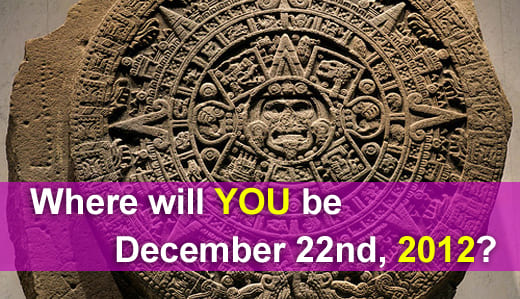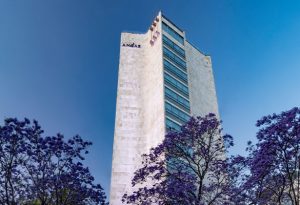
Most people don't realize that the calendar above is the Aztec calendar adapted from the Mayans
#MexicoToday: Ever since scientists/historians have discovered that 2012 marks a certain “end” to the Mayan Calendar, excitement has been abuzz about December of 2011. Although many would argue that most of the “end of the world” theories associated with the Mayan Calendar and 2012 are misinterpreted, most scientists and historians knowledgeable about the topic would agree that 2012 does mark “the end of something.”
During a recent trip to Chiapas, I had an interesting conversation with one of our top guides, Roberto, about the Mayans and their advanced skill in terms of astronomy. Roberto made a fascinating point when said that if you contextualize the Mayans with other civilizations of the world at the time, the Mayans were far more advanced in mathematics and astronomy, yet they were far behind in other areas of life as they were basically still living in “the stone age.” They could make nearly perfect calculations in terms of the yearly calendar but had yet to really discover the wheel. When I started to ask Roberto about the specifics of the Mayan Calendar and what it predicts, he said that was a whole different conversation that we didn’t have time to get into.
It’s that conversation, though, that seems so exciting. Does the calender predict the end of the world or just the end of a “cycle?” If it’s a cycle, what will the new cycle bring?
The possibility of finding the answers to these questions has enthusiasts from around the world interested in being in Mayan Mexico for the year’s end. Seizing this opportunity to bolster travel to Mexico, Mexican President Felipe Calderon has announced the launch of “Mundo Maya 2012″ (Mayan World 2012), a program designed to increase tourism and promote the Mayan Culture Legacy in Mexico through 2012.
A recent press release in regards to the program states: “Between now and Dec. 21, 2012, when the Mayan calendar officially ends, the Mexican government will promote a variety of events in southeastern Mexico’s “Mayan World,” made up of the states Campeche, Chiapas, Tabasco, Quintana Roo and Yucatan. This region is home to six of Mexico’s 27 UNESCO World Heritage sites, the most found in any one country.”
The Mexican government is investing money into improving the roads leading to the Mayan archeological sites as well as their facilities to prepare for the increase in tourism. The government has also said that they plan to make previously private sites available to the public for the program, which is exciting as Mexican archeologists continue to make new discoveries daily.
End of the world or not, the Yucatan Peninsula is poised to deliver an unforgettable New Year’s experience. Where will you be?






